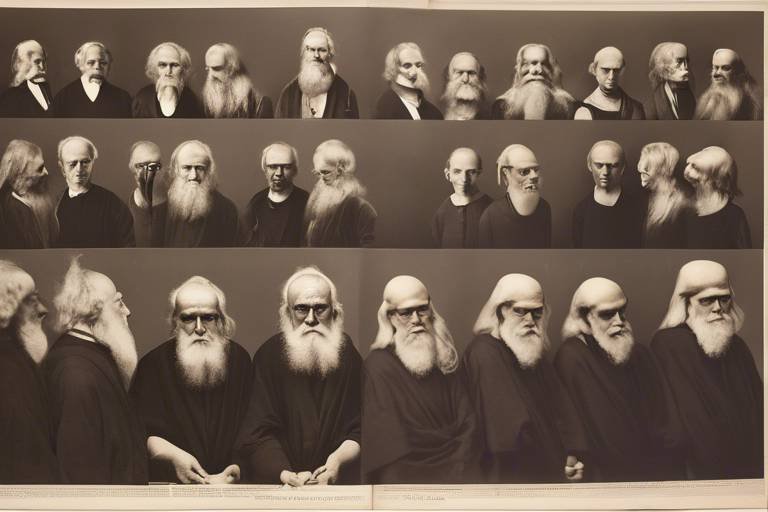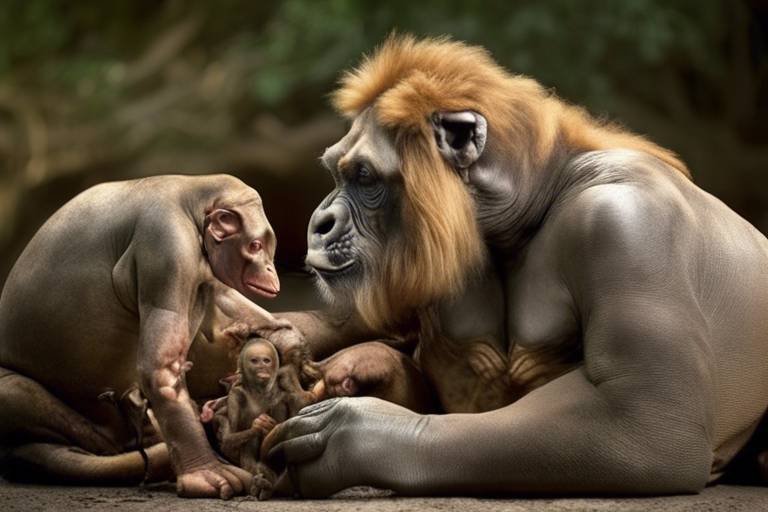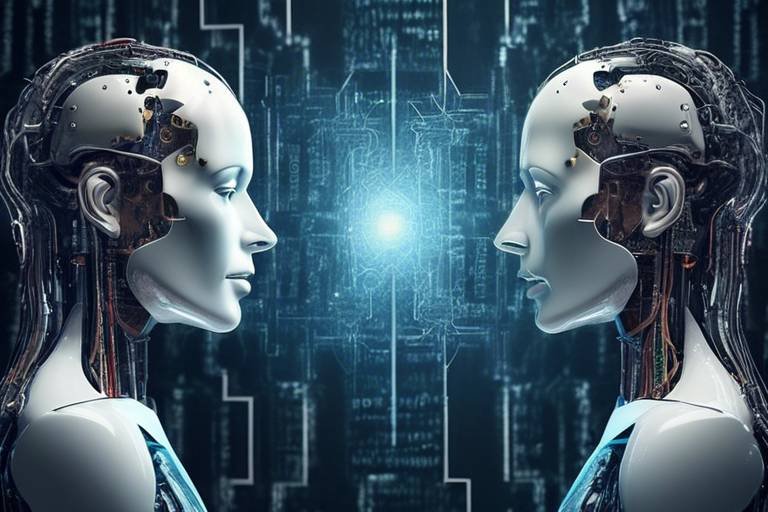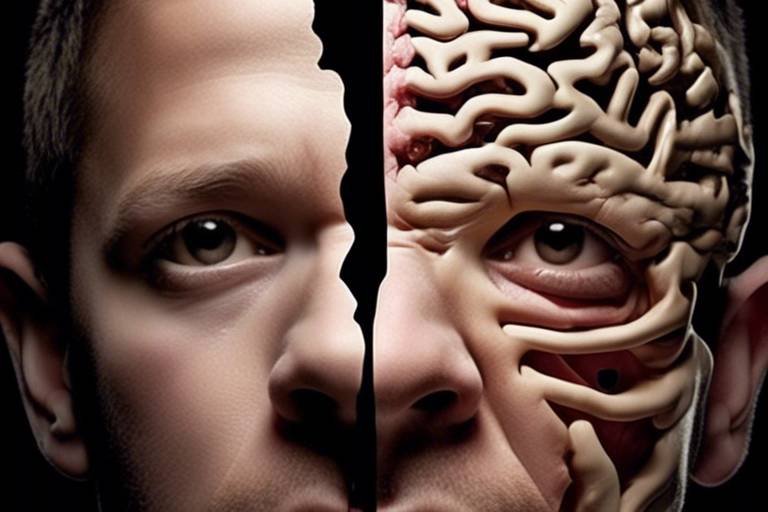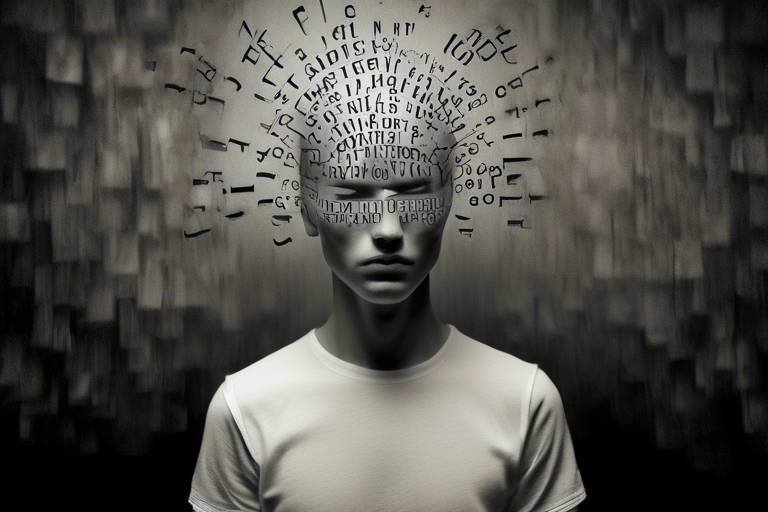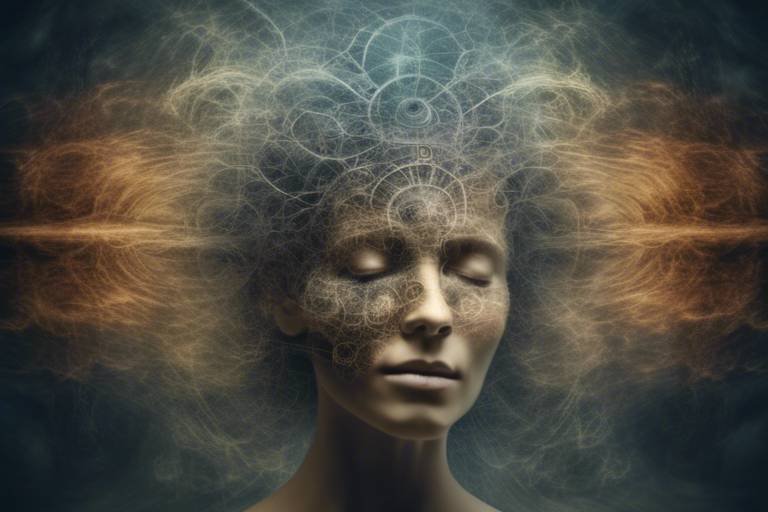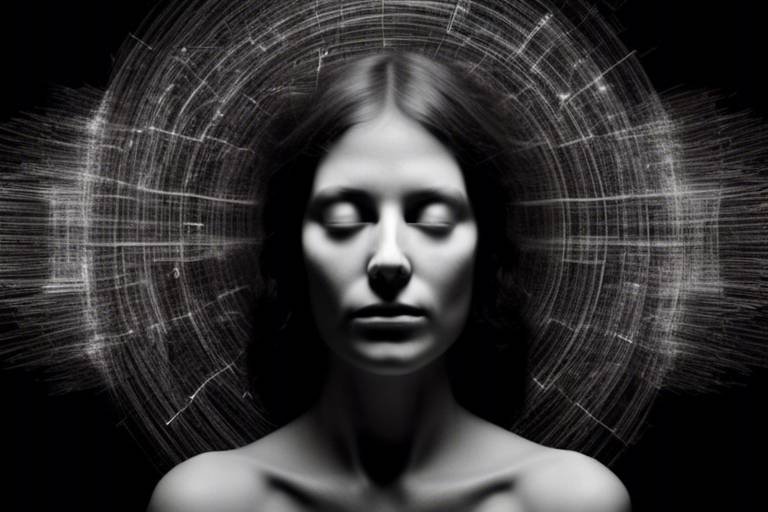Exploring the Layers of Human Consciousness
Have you ever wondered what it truly means to be conscious? It’s a question that has puzzled philosophers, scientists, and curious minds alike for centuries. Consciousness is not just a simple on/off switch; rather, it resembles a complex tapestry woven from various threads of experience, perception, and awareness. In this article, we will embark on a fascinating journey through the intricate layers of human consciousness, exploring its diverse functions and implications for our understanding of the self and the universe.
The term "consciousness" itself is enigmatic, often defined in numerous ways depending on the context. For some, it’s the experience of being awake and aware of one’s surroundings; for others, it may encompass deeper existential reflections on identity and existence. To truly grasp the essence of consciousness, we must peel back its layers and examine the different states and influences that shape our experience of reality.
As we delve into this exploration, we will uncover how consciousness is not merely a singular state but a spectrum that includes various levels—each with its own characteristics and significance. From the vibrant, bustling streets of our waking lives to the quiet, shadowy realms of our dreams, each layer offers unique insights into the human experience. So, grab a cup of coffee, sit back, and let’s dive deep into the layers of human consciousness!
Understanding consciousness begins with defining it. Philosophers have long debated its meaning, and various interpretations have emerged over time. At its core, consciousness can be described as the state of being aware of and able to think and perceive one’s surroundings and oneself. However, definitions can vary widely:
- Philosophical Perspective: Some philosophers argue that consciousness is the essence of being, a fundamental aspect of existence.
- Scientific Approach: Neuroscientists often view consciousness as a product of brain activity, a complex interplay of neural processes.
- Psychological View: Psychologists may define consciousness in terms of cognitive functions, including perception, attention, and memory.
These perspectives highlight the multifaceted nature of consciousness, suggesting that it cannot be easily pigeonholed into a single definition. Instead, it is a rich, dynamic experience that encompasses various cognitive and emotional processes.
Consciousness is not a monolithic entity; it exists in various levels, each representing a different state of awareness. Understanding these levels can shed light on how we navigate our daily lives and interact with the world around us. The primary levels of consciousness include:
- Waking Consciousness: This is our everyday awareness, where we engage with the world through our senses.
- Altered States: These occur during experiences like meditation, sleep, or the influence of substances, leading to different perceptions of reality.
- Subconscious Mind: This layer operates beneath our conscious awareness, influencing our thoughts, feelings, and behaviors.
- Collective Consciousness: This refers to the shared beliefs and ideas within a society, shaping cultural norms and individual identities.
Each of these levels plays a crucial role in shaping our experiences and understanding of ourselves and the universe. By exploring these layers, we can gain a deeper appreciation for the complexity of human consciousness.
Waking consciousness is the most familiar state to us, characterized by our active engagement with the world. It’s during this state that we make decisions, interact with others, and experience life in vivid detail. But what exactly defines our waking consciousness?
Firstly, it is marked by perception—the way we interpret sensory information from our environment. Our brains are constantly processing data from our senses, allowing us to construct our reality. This process is not merely passive; it’s an active engagement where our previous experiences and expectations influence how we perceive the world.
Perception is a key aspect of waking consciousness. It involves not only seeing or hearing but also understanding and interpreting what those senses convey. For example, when you hear a song, it’s not just sound waves hitting your eardrums; it’s a blend of emotions, memories, and cultural contexts that create a rich tapestry of meaning. This cognitive processing is what makes our waking consciousness a vibrant and dynamic experience.
Another crucial element of waking consciousness is attention. It’s the spotlight that allows us to focus on specific stimuli while filtering out distractions. Have you ever been so engrossed in a book that the world around you fades away? That’s the power of selective attention at work. By directing our focus, we can enhance our experiences and make more informed decisions. However, this also means that our awareness is limited; we can only process so much information at once, which is why multitasking often leads to decreased efficiency.
Altered states of consciousness can occur through various means, such as meditation, sleep, or the use of psychoactive substances. These states can provide unique insights into the nature of consciousness itself, often leading to profound experiences and revelations. For instance, during deep meditation, individuals may report feelings of interconnectedness or transcendence, suggesting that consciousness can exist beyond the confines of our everyday awareness.
The subconscious mind plays a significant role in shaping our thoughts and behaviors. Operating beneath our conscious awareness, it influences our decisions and reactions in ways we may not even realize. Think of the subconscious as a vast storage room filled with memories, emotions, and learned behaviors—most of which we are unaware of but still impact our daily lives.
Dreams serve as a fascinating window into the subconscious. They can be puzzling, vivid, or even terrifying, but they often reflect our innermost thoughts and feelings. Psychologists suggest that dreams play a crucial role in processing emotions and experiences, helping us make sense of the world around us. Have you ever woken up from a dream and felt as though you had just experienced something profound? That’s the power of the subconscious at work, revealing insights that our waking mind may overlook.
Repressed memories reside in the subconscious, often affecting our behavior without our conscious awareness. These memories can stem from traumatic experiences, and while they may be buried deep within, they can still influence our thoughts and actions. Understanding the nature of these repressed memories is essential, as they hold significant implications for mental health and personal growth.
Collective consciousness refers to the shared beliefs and ideas within a society. It shapes our culture, social norms, and individual identity, creating a framework through which we understand the world. This concept is particularly relevant in today’s interconnected world, where cultural narratives and symbols influence our perceptions and behaviors.
Culture significantly impacts our collective consciousness. From art and literature to traditions and rituals, cultural narratives shape our understanding of reality and influence individual behavior. For instance, consider how different cultures view concepts like success or happiness—these beliefs can vary widely and profoundly affect how individuals perceive their lives.
In the digital age, social media plays a pivotal role in shaping collective consciousness. Platforms like Facebook, Twitter, and Instagram allow for the rapid dissemination of ideas and beliefs, influencing societal norms and individual identities. However, this also raises questions about the authenticity of our collective consciousness—are we genuinely expressing our beliefs, or are we merely echoing the sentiments of others?
What is consciousness?
Consciousness is the state of being aware of and able to think and perceive one's surroundings and oneself. It encompasses a range of experiences, from waking awareness to deep subconscious processes.
Are there different levels of consciousness?
Yes, consciousness exists in various levels, including waking consciousness, altered states, the subconscious mind, and collective consciousness, each with its unique characteristics and significance.
How does the subconscious mind influence our behavior?
The subconscious mind operates beneath our conscious awareness, influencing our thoughts, feelings, and behaviors based on stored memories, emotions, and learned experiences.
What role do dreams play in consciousness?
Dreams serve as a window into the subconscious, helping us process emotions and experiences while providing insights that our waking mind may overlook.

The Definition of Consciousness
Understanding consciousness begins with defining it, a task that is as intricate as the phenomenon itself. At its core, consciousness refers to our awareness of ourselves and our environment. But wait—does that mean we’re only conscious when we’re awake? Not quite! Consciousness is a multi-layered experience that encompasses various states, from deep sleep to heightened awareness during meditation. Think of it as an onion, where each layer reveals a new aspect of our mental and emotional fabric.
Philosophers, psychologists, and neuroscientists have long pondered the essence of consciousness, leading to a plethora of interpretations and theories. Some argue that consciousness is merely a byproduct of brain activity, while others posit that it’s a fundamental aspect of existence itself. Here are a few prominent theories:
- Dualism: This theory suggests that the mind and body are separate entities. Renowned philosopher René Descartes famously championed this idea, arguing that our mental experiences cannot be fully explained by physical processes.
- Materialism: In stark contrast, materialists believe that consciousness arises from physical brain processes. This view aligns with modern neuroscience, which seeks to understand how brain activity correlates with conscious experience.
- Panpsychism: This more unconventional theory posits that consciousness is a fundamental quality of all matter, suggesting that even inanimate objects possess a form of consciousness.
Moreover, the definition of consciousness extends beyond mere awareness. It involves a complex interplay of perception, cognition, and emotion. For instance, consider how our thoughts can shape our feelings and vice versa. This dynamic relationship highlights the importance of consciousness in shaping our reality. To put it simply, consciousness is not just about being awake; it’s about experiencing life in a deeply personal way.
Ultimately, the quest to define consciousness is ongoing, with each perspective offering valuable insights. As we continue to explore this profound topic, we might find that consciousness is not just a subject for academic debate, but a gateway to understanding our very existence in the universe. So, what does it mean to be conscious? Perhaps it’s a journey of discovery, revealing the layers of our mind and the vastness of our experiences.

Levels of Consciousness
Consciousness is a fascinating and intricate phenomenon that exists in various layers, much like the different strata of an onion. Each layer represents a distinct state of awareness, influencing not only how we perceive the world but also how we interact with it. Understanding these levels is crucial for grasping the full spectrum of human experience. At the core, we find waking consciousness, which serves as our everyday awareness, but as we peel back the layers, we encounter deeper and more enigmatic states.
To illustrate the complexity of consciousness, let's break it down into several key levels:
- Waking Consciousness: This is the state we are most familiar with, where we engage with our surroundings, make decisions, and experience life in real-time.
- Altered States: These can be induced through various means such as meditation, sleep, or the use of psychoactive substances, leading to experiences that differ significantly from our waking state.
- Subconscious Mind: Operating below our conscious awareness, the subconscious mind plays a vital role in shaping our thoughts, behaviors, and emotional responses.
- Unconscious Mind: This level houses repressed memories and unresolved conflicts, influencing our actions without our conscious knowledge.
Each of these levels serves a purpose, contributing to the rich tapestry of human consciousness. For instance, waking consciousness is where we conduct our daily activities and make choices that affect our lives. It’s the stage where we experience the world through our senses, interact with others, and navigate through the complexities of life. Have you ever noticed how your mood can shift your perception of a situation? That’s the power of waking consciousness at play!
On the flip side, altered states of consciousness can provide us with insights that waking life often obscures. Think of meditation, for instance. It’s like hitting the reset button on your mind, allowing you to explore deeper aspects of yourself and gain clarity. Similarly, dreams during sleep can transport us to a realm where our subconscious thoughts and feelings surface, often revealing truths we might not acknowledge when awake.
Now, let’s not forget the subconscious mind, which is like the background music of our lives—ever-present yet often unnoticed. It processes information and experiences, influencing our decisions and emotional responses without us even realizing it. Have you ever found yourself reacting to a situation based on a feeling you couldn’t quite explain? That’s your subconscious at work, pulling from memories and experiences stored away in the depths of your mind.
Finally, there’s the unconscious mind, which can be likened to a hidden treasure chest filled with repressed memories and unresolved issues. These elements can have a profound impact on our behavior, often manifesting in ways that are puzzling or unexpected. Understanding this level of consciousness can be crucial for personal growth and healing, as it encourages us to confront and process these hidden aspects of ourselves.
In conclusion, the levels of consciousness are not just academic concepts; they are the very fabric of our existence, influencing our thoughts, feelings, and actions in ways we often take for granted. By exploring these layers, we can gain a deeper understanding of ourselves and our place in the universe, ultimately leading to a more enriched and fulfilling life.
- What is waking consciousness? Waking consciousness is the state of awareness we experience during our daily activities, where we interact with our environment and make decisions.
- How can altered states of consciousness benefit us? Altered states can provide insights, enhance creativity, and promote relaxation, allowing us to explore different aspects of our mind.
- What role does the subconscious mind play in our lives? The subconscious mind influences our thoughts and behaviors based on experiences and memories that we may not be consciously aware of.
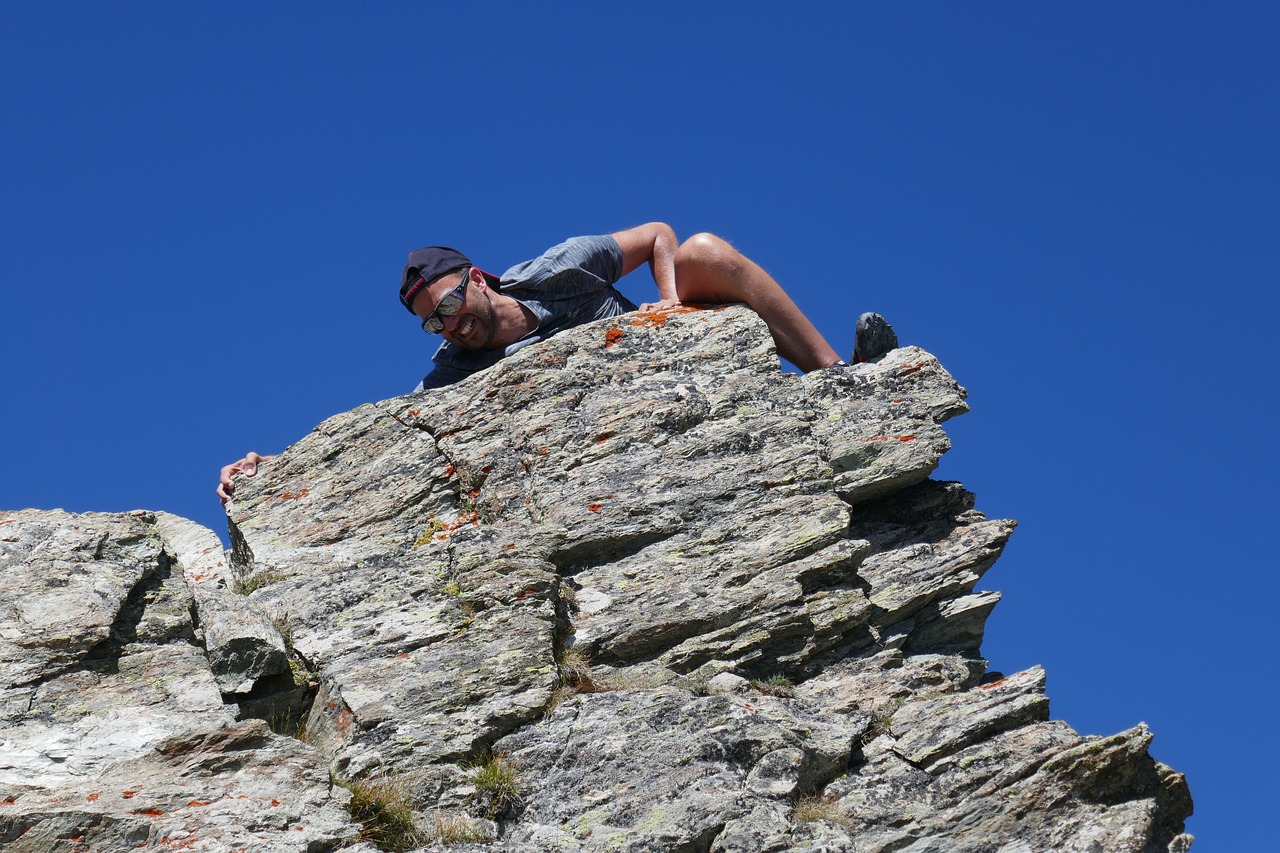
Waking Consciousness
Waking consciousness is that vibrant, bustling state of awareness we experience in our daily lives. It's akin to being the captain of a ship navigating through the vast ocean of reality, where every wave represents a thought, every gust of wind a sensation, and every star a fleeting moment of insight. This state of consciousness shapes our interactions, decisions, and ultimately, our experiences. It’s where we engage with the world around us, process information, and make choices that define our paths.
At its core, waking consciousness is characterized by a heightened sense of perception and awareness. But what does that really mean? Well, perception involves how we interpret sensory information—what we see, hear, smell, taste, and touch. Awareness, on the other hand, is our ability to recognize and acknowledge those perceptions. Together, they create a rich tapestry of experience that informs our understanding of the world and ourselves.
Imagine walking through a bustling market. Your waking consciousness is engaged as you navigate the sights and sounds—the vibrant colors of fresh produce, the enticing aromas of street food, and the chatter of fellow shoppers. Your brain is not just passively receiving this information; it’s actively filtering and prioritizing what deserves your attention. This is where the concept of attention comes into play. Attention acts like a spotlight, illuminating certain aspects of our experience while allowing others to fade into the background. It’s a crucial component of waking consciousness, as it determines what we focus on and how we react to it.
In fact, the ability to concentrate and maintain focus can significantly impact our daily lives. For instance, when studying for an exam or working on a project, our capacity to direct our attention is what enables us to absorb information and complete tasks effectively. However, in a world filled with distractions—from notifications on our phones to the endless scroll of social media—maintaining that focus can be a daunting challenge.
Moreover, waking consciousness is not just about what we are actively thinking or doing; it also encompasses our emotional state and how we relate to our thoughts. Have you ever had a moment where you felt completely in the zone, where everything seemed to flow effortlessly? That’s a perfect illustration of waking consciousness at its peak. But conversely, when anxiety or stress creeps in, it can cloud our judgment and distort our perception, leading to a fragmented experience of reality.
In summary, waking consciousness is a dynamic interplay of perception, awareness, and attention. It’s where we live out our daily lives, make decisions, and forge connections with others. Understanding this state is crucial not only for personal growth but also for navigating the complexities of our existence. After all, how can we truly know ourselves or the world around us if we don’t first understand the very nature of our consciousness?
- What is waking consciousness?
Waking consciousness refers to the state of awareness we experience during our daily activities, characterized by perception, awareness, and focused attention. - How does attention affect waking consciousness?
Attention acts as a filter, allowing us to focus on specific stimuli while ignoring others, thereby shaping our experiences and decision-making processes. - Can waking consciousness be altered?
Yes, various factors such as stress, fatigue, or even external stimuli can alter our waking consciousness and affect how we perceive reality.

Perception and Awareness
When we think about perception, it’s like peering through a unique lens that colors our understanding of the world. Imagine waking up in a vibrant city, where every sound, color, and smell tells a story. This is the essence of perception—our ability to interpret and make sense of the world around us. But what happens when that lens is smudged or cracked? Our awareness can be affected in profound ways. The interplay between perception and awareness is a dance that shapes our reality, and understanding it can unlock deeper insights into our daily lives.
At its core, perception is not just about what we see; it encompasses all our senses. From the gentle rustle of leaves in the wind to the aroma of freshly brewed coffee, our brain is constantly processing sensory information. This sensory input is then filtered through our awareness, which helps us focus on what is most relevant at any given moment. For instance, have you ever noticed how you can tune out background noise when you’re engrossed in a conversation? That’s your awareness at work, filtering distractions and honing in on what truly matters.
To illustrate this further, let’s consider the concept of selective attention. This is our brain’s ability to concentrate on certain stimuli while ignoring others. It’s like being at a party where you’re having a deep conversation with a friend, yet you can still hear snippets of other conversations around you. The brain prioritizes information, allowing us to navigate our environment effectively. However, this selective process can sometimes lead to cognitive biases, where we might overlook important details simply because they don’t fit our current narrative. This is why understanding perception and awareness is crucial; it helps us recognize our blind spots and expand our understanding of reality.
Moreover, perception is influenced by a myriad of factors, including our past experiences, cultural background, and even our emotional state. For example, two people can witness the same event but interpret it in completely different ways based on their individual experiences. This subjectivity is what makes human interaction so rich and complex. It’s also a reminder that our perception is not an absolute truth; rather, it’s a unique interpretation shaped by our personal lens.
In the realm of psychology, the study of perception and awareness has led to fascinating discoveries. Researchers have found that our brain is not merely a passive receiver of information; it actively constructs our experience of reality. This means that our thoughts, beliefs, and emotions play a significant role in how we perceive the world. It’s a bit like being an artist, where the canvas of reality is painted with the colors of our consciousness. The more we understand this process, the better equipped we are to navigate life’s complexities.
In conclusion, perception and awareness are interwoven threads that form the fabric of our experiences. By exploring these concepts, we open ourselves to a deeper understanding of ourselves and the world around us. So the next time you find yourself lost in thought or distracted by the chaos of life, take a moment to pause and reflect on how your perception shapes your reality. After all, awareness is the first step toward clarity and transformation.
- What is the difference between perception and awareness?
Perception refers to how we interpret sensory information, while awareness is our ability to focus on and process that information in the context of our experiences. - Can perception be altered?
Yes, perception can change based on various factors, including emotional states, past experiences, and even cultural influences. - How does selective attention work?
Selective attention allows us to concentrate on specific stimuli while filtering out distractions, enabling us to focus on what is most relevant to us at any moment.

Attention and Focus
Attention and focus are the unsung heroes of our waking consciousness, acting as the gatekeepers to our experiences and perceptions. Imagine your mind as a vast landscape, filled with countless paths leading to different thoughts, sensations, and memories. Without attention, we would be wandering aimlessly, lost in a maze of distractions. But when we direct our focus, we illuminate the path we choose to travel, allowing us to engage deeply with the world around us.
At its core, attention is the cognitive process that enables us to concentrate on specific stimuli while ignoring others. This selective process is crucial because our brains are bombarded with an overwhelming amount of information every second. From the sounds of traffic outside to the notifications on our phones, the sheer volume of data can be paralyzing. By honing our attention, we can filter out the noise and hone in on what truly matters. Think of it as tuning a radio to find that perfect station amidst the static.
There are different types of attention that we utilize in our daily lives, each serving a unique purpose:
- Selective Attention: This is when we focus on a particular object or task while ignoring distractions. For example, when you’re reading a book in a crowded café, you may tune out the chatter around you.
- Divided Attention: This refers to our ability to multitask, such as talking on the phone while cooking dinner. However, it’s worth noting that our performance can suffer when we spread our attention too thin.
- Sustained Attention: This is the ability to maintain focus on a task over an extended period, like studying for an exam or working on a project.
Understanding how attention works can have profound implications for how we live our lives. For instance, the practice of mindfulness encourages us to cultivate our attention, helping us to become more aware of our thoughts and feelings. By training our focus, we can enhance our emotional well-being and improve our decision-making skills. This is particularly important in our fast-paced, distraction-filled world where maintaining focus can feel like an uphill battle.
Moreover, attention is not just a mental exercise; it has physical manifestations as well. When we focus intently on a task, our brain releases neurotransmitters that enhance our cognitive abilities. This biochemical response can lead to improved memory retention and greater creativity. In essence, the act of focusing can transform our mental landscape, allowing us to explore ideas and solutions that might have otherwise remained hidden. So, the next time you find yourself struggling to concentrate, remember that attention is not just about willpower; it’s about training your mind to navigate the complexities of consciousness.
In conclusion, attention and focus are vital components of our waking consciousness. They shape our experiences, influence our decisions, and ultimately define how we interact with the world. By understanding and honing our attention, we can unlock the potential of our minds and lead more fulfilling lives.
Q: What is attention?
A: Attention is the cognitive process of selectively concentrating on one aspect of the environment while ignoring others.
Q: How can I improve my focus?
A: You can improve your focus by practicing mindfulness, minimizing distractions, and breaking tasks into smaller, manageable parts.
Q: What are the different types of attention?
A: The main types of attention include selective attention, divided attention, and sustained attention.
Q: Why is attention important?
A: Attention is crucial because it helps us navigate our environment, make decisions, and engage fully with our experiences.

Altered States of Consciousness
Altered states of consciousness are fascinating realms that take us beyond our typical waking experience. These states can be induced through various means, each offering unique insights into the human mind and spirit. Think of it like traveling to a different dimension where the usual rules of perception and awareness don’t apply. Whether through meditation, sleep, dreams, or even the influence of psychoactive substances, altered states provide a glimpse into the deeper layers of our consciousness.
One of the most common ways to experience an altered state is through meditation. This practice allows individuals to quiet their minds and transcend the noise of everyday thoughts. Many who meditate report feelings of profound peace, heightened awareness, and a sense of connection to something greater than themselves. It’s like tuning into a radio frequency that reveals the hidden melodies of the universe.
Another avenue to altered consciousness is through sleep. While it may seem mundane, sleep is a rich tapestry of experiences. During different sleep stages, particularly REM (Rapid Eye Movement) sleep, our brains become incredibly active, leading to vivid dreams. These dreams can serve as a portal to our subconscious, allowing us to process emotions and experiences that we might not confront while awake. In this state, our minds can create fantastical narratives that often blur the lines between reality and imagination.
Moreover, the use of psychoactive substances has been a part of human exploration for centuries. Substances like LSD, psilocybin (magic mushrooms), and ayahuasca can induce profound shifts in consciousness, leading to experiences that some describe as spiritual awakenings or deep insights into the nature of reality. However, it's crucial to approach these substances with caution and respect, as their effects can be unpredictable and vary widely among individuals.
In addition to these methods, we can also experience altered states through breathwork or sensory deprivation. Breathwork techniques, such as holotropic breathing, can induce states of heightened awareness and emotional release. On the other hand, sensory deprivation tanks create an environment free from external stimuli, allowing individuals to delve deep into their consciousness without distractions. This can lead to profound insights and a heightened sense of self-awareness.
Ultimately, altered states of consciousness remind us that our understanding of reality is just the tip of the iceberg. Each experience serves as a stepping stone toward greater self-awareness and understanding of the universe. As we explore these states, we uncover the mysteries of our minds and the rich tapestry of human experience.
- What are altered states of consciousness? Altered states of consciousness refer to mental states that differ from normal waking consciousness, often induced by various practices or substances.
- How can I safely explore altered states? Safe exploration can be achieved through practices like meditation, breathwork, or guided experiences, while being mindful of the potential risks associated with substances.
- What is the significance of altered states? These states can provide insights into our subconscious, enhance creativity, and foster a deeper understanding of ourselves and the universe.

Subconscious Mind
The is a fascinating realm that operates just below our conscious awareness, shaping our thoughts, feelings, and actions in profound ways. Imagine it as the backstage crew of a theater production, working tirelessly behind the scenes to ensure that the show goes on smoothly. While we may not always be aware of its influence, the subconscious mind plays a pivotal role in our daily lives, affecting everything from our decision-making processes to our emotional responses.
One of the most intriguing aspects of the subconscious mind is its ability to store and retrieve information without our conscious effort. It acts like a vast library, cataloging our experiences, beliefs, and memories. However, this library isn’t always neatly organized; sometimes, it holds onto repressed memories that can affect our behavior in unexpected ways. These memories, often buried due to their emotional weight, can resurface in various forms, influencing our reactions and interactions without us even realizing it.
Moreover, the subconscious mind is responsible for our automatic behaviors and habits. Think about how you can drive a car or ride a bike without consciously thinking about every action involved. This is your subconscious at work, allowing you to perform complex tasks with ease. It also plays a crucial role in our emotional regulation, often guiding us toward feelings of joy or anxiety based on past experiences. Understanding how the subconscious operates can empower us to take control of our lives by recognizing patterns that may no longer serve us.
In exploring the subconscious, we also encounter the phenomenon of dreams. Dreams serve as a direct line to our subconscious, offering insights into our deepest fears, desires, and unresolved conflicts. They can be vivid and surreal, often leaving us with lingering questions upon waking. Analyzing our dreams can provide valuable clues about what our subconscious is trying to communicate. For instance, a recurring dream about falling might indicate feelings of insecurity or loss of control in waking life.
Additionally, the subconscious mind is a powerhouse when it comes to creativity. Many artists, writers, and thinkers tap into this reservoir of ideas and inspiration, often describing moments of sudden clarity or insight as if the ideas came from nowhere. This is a testament to the subconscious mind’s ability to connect disparate thoughts and experiences, weaving them into something new and innovative.
To illustrate the impact of the subconscious mind, consider the following table that summarizes its key functions:
| Function | Description |
|---|---|
| Memory Storage | Holds onto experiences and knowledge, influencing our behavior. |
| Automatic Behaviors | Enables us to perform tasks without conscious thought. |
| Emotional Regulation | Guides our emotional responses based on past experiences. |
| Dream Analysis | Offers insights into our subconscious thoughts and feelings. |
| Creativity | Facilitates the generation of new ideas and solutions. |
In conclusion, the subconscious mind is a complex and powerful part of our psychological makeup. By understanding its functions and influences, we can begin to unravel the mysteries of our own behavior and emotional landscape. This exploration not only enhances our self-awareness but also empowers us to make conscious choices that align with our true selves.
- What is the subconscious mind? The subconscious mind is a part of our mental processes that operates below the level of conscious awareness, influencing our thoughts and behaviors.
- How does the subconscious mind affect our daily lives? It shapes our habits, emotional responses, and decision-making, often without us realizing it.
- Can we access the subconscious mind? Yes, techniques like meditation, dream analysis, and journaling can help us tap into our subconscious thoughts and feelings.
- What role do dreams play in understanding the subconscious? Dreams can provide insights into our subconscious, revealing hidden fears, desires, and unresolved conflicts.
- How can we change subconscious patterns? By becoming aware of our subconscious beliefs and actively working to replace negative patterns with positive ones, we can create lasting change.

Dreams and the Subconscious
Dreams are like a mysterious portal into the subconscious mind, offering us a glimpse of thoughts, emotions, and experiences that often lie beneath the surface of our waking consciousness. Have you ever woken up from a vivid dream, pondering its meaning? Dreams serve as a fascinating bridge between our conscious thoughts and the deeper, often hidden layers of our psyche. They can be whimsical, frightening, or even enlightening, reflecting our innermost desires and fears. But what exactly happens during these nightly adventures?
During sleep, the brain engages in a complex dance of activity, particularly during the REM (Rapid Eye Movement) phase, when most dreaming occurs. This stage is crucial for emotional regulation and memory consolidation. It's as if our brain is sorting through the day's events, emotions, and experiences, allowing us to process and integrate them. Dreams can help us make sense of our lives, providing insights that we may not access during our waking hours.
One of the most intriguing aspects of dreams is their ability to reveal repressed emotions and unresolved conflicts. For example, if you've experienced a traumatic event, you might find that your dreams revisit those memories in abstract or symbolic forms. This can be a way for your subconscious to work through feelings that you haven't fully acknowledged. In this sense, dreams can serve as a therapeutic tool, offering a safe space to confront and explore difficult emotions.
Moreover, dreams can also inspire creativity. Many artists, writers, and inventors have credited their dreams with sparking innovative ideas. Think about it: when you're dreaming, the usual constraints of logic and reality fade away, allowing for a free flow of imagination. This is why keeping a dream journal can be a valuable practice. By jotting down your dreams as soon as you wake up, you can capture fleeting ideas and insights that might otherwise slip away.
In addition to individual experiences, dreams can also reflect cultural narratives and shared symbols. Different cultures interpret dreams in various ways, often attributing significant meaning to them. For instance, in some cultures, dreaming of water might symbolize emotional cleansing, while in others, it could represent danger. This cultural lens adds another layer to the understanding of dreams and their connection to the subconscious.
In summary, dreams are not just random images and stories that play out while we sleep; they are essential reflections of our subconscious mind. They can reveal our hidden fears, process our emotions, and even inspire us creatively. By paying attention to our dreams, we can gain valuable insights into our lives and ourselves. So, the next time you wake up from a dream, take a moment to reflect on its potential meanings and what it might be trying to tell you.
- What do dreams mean? Dreams can have various meanings, often reflecting our emotions, experiences, and subconscious thoughts.
- Can dreams predict the future? While some people believe dreams can offer glimpses into the future, there is no scientific evidence to support this claim.
- How can I remember my dreams? Keeping a dream journal by your bedside and writing down your dreams immediately after waking can help improve dream recall.
- Are nightmares a sign of stress? Yes, frequent nightmares can indicate underlying stress or anxiety and may warrant further exploration.
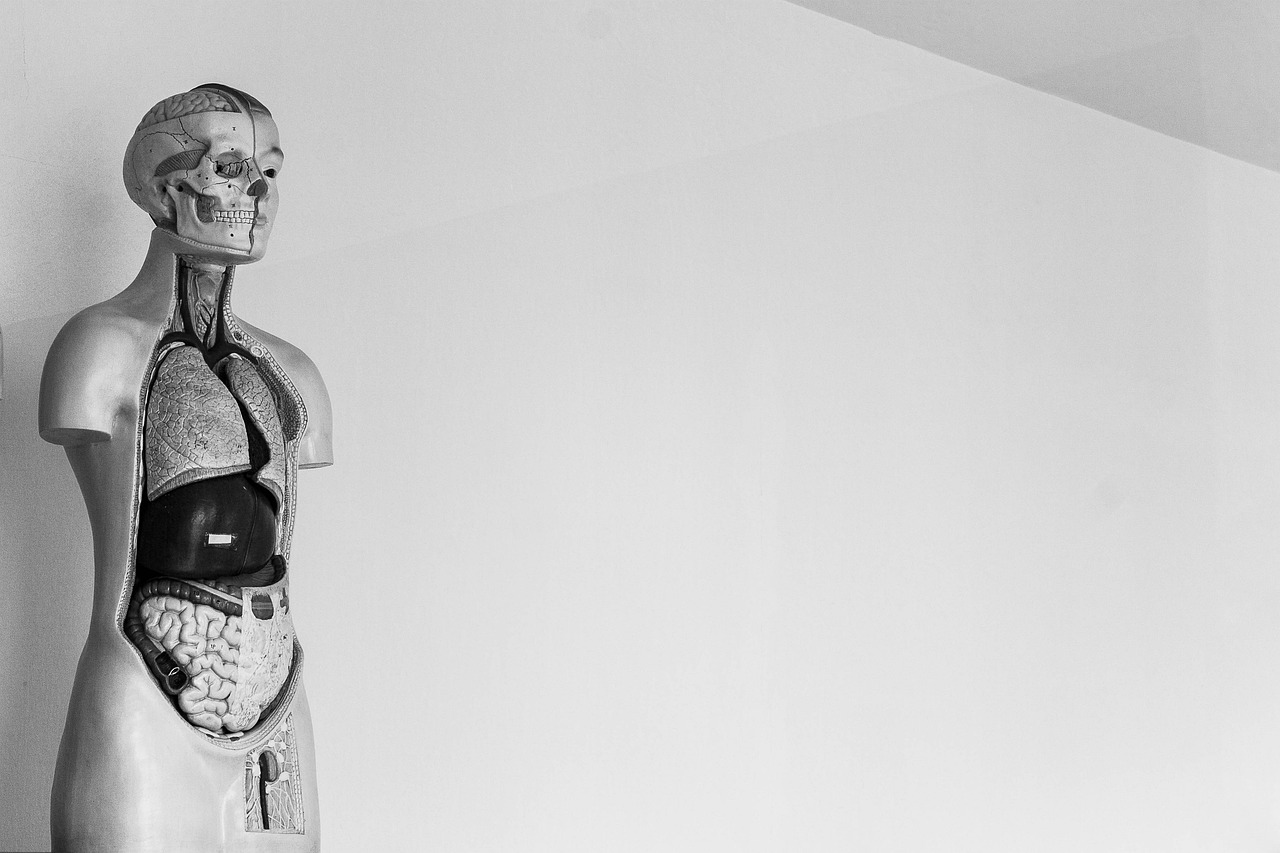
Repressed Memories
Repressed memories are like hidden treasures buried deep within the vast ocean of our subconscious mind. They often hold emotional weight and can significantly influence our behavior, thoughts, and even our relationships without us being fully aware of their presence. These memories are typically the result of trauma or distressing experiences that the brain instinctively pushes away to protect itself. Imagine your mind as a protective vault, where the most painful experiences are locked away, sometimes never to be seen again. But what happens when these memories resurface?
The process of repression is fascinating and complex. When someone experiences a traumatic event, their brain may choose to suppress the memory as a coping mechanism. This is akin to a computer's "delete" function, where files are removed from immediate access but not necessarily erased. These repressed memories can manifest in various ways, often affecting a person's emotional state and behavior. For instance, someone might suddenly feel anxious in certain situations without understanding why. The roots of that anxiety could be tangled in a memory they can’t consciously recall.
Research suggests that repressed memories can be both a blessing and a curse. On one hand, they protect individuals from the immediate pain associated with trauma. On the other, when these memories eventually surface, they can lead to overwhelming feelings of confusion, fear, or sadness. It’s like opening a Pandora's box; once it’s open, the contents can be chaotic and difficult to manage.
Understanding the implications of repressed memories is crucial for mental health. Therapists often explore these memories during treatment, employing methods such as talk therapy or guided imagery to help individuals access and process these buried experiences. This journey can be both enlightening and challenging, as it requires individuals to confront feelings and events they have long avoided.
Here are some key points about repressed memories:
- Formation: Repressed memories typically form during traumatic events, where the brain decides to suppress the memory to protect the individual from emotional pain.
- Manifestation: These memories can manifest as anxiety, depression, or unexplained emotional reactions in everyday life.
- Therapeutic Exploration: Therapists may use various techniques to help individuals access and understand these memories, facilitating healing and growth.
In conclusion, repressed memories highlight the intricate workings of our subconscious mind. They remind us that our past experiences, even those we cannot recall, shape who we are today. As we delve deeper into the layers of consciousness, we begin to understand the importance of addressing these hidden memories, not just for personal healing but for a broader understanding of human psychology.
1. What are repressed memories?
Repressed memories are memories of traumatic events that have been unconsciously blocked from awareness to protect the individual from emotional pain.
2. How do repressed memories affect behavior?
These memories can lead to unexplained feelings, anxiety, or behavioral changes, as the individual may react to triggers associated with the repressed memory without understanding why.
3. Can repressed memories be recovered?
Yes, through therapeutic techniques, individuals may be able to access and process repressed memories, which can aid in healing and understanding past traumas.
4. Are repressed memories always accurate?
There is ongoing debate about the accuracy of repressed memories. While some may be valid, others can be distorted or influenced by external factors, such as leading questions during therapy.
5. How can therapy help with repressed memories?
Therapy can provide a safe space for individuals to explore their feelings and memories, potentially leading to the recovery of repressed memories and facilitating emotional healing.
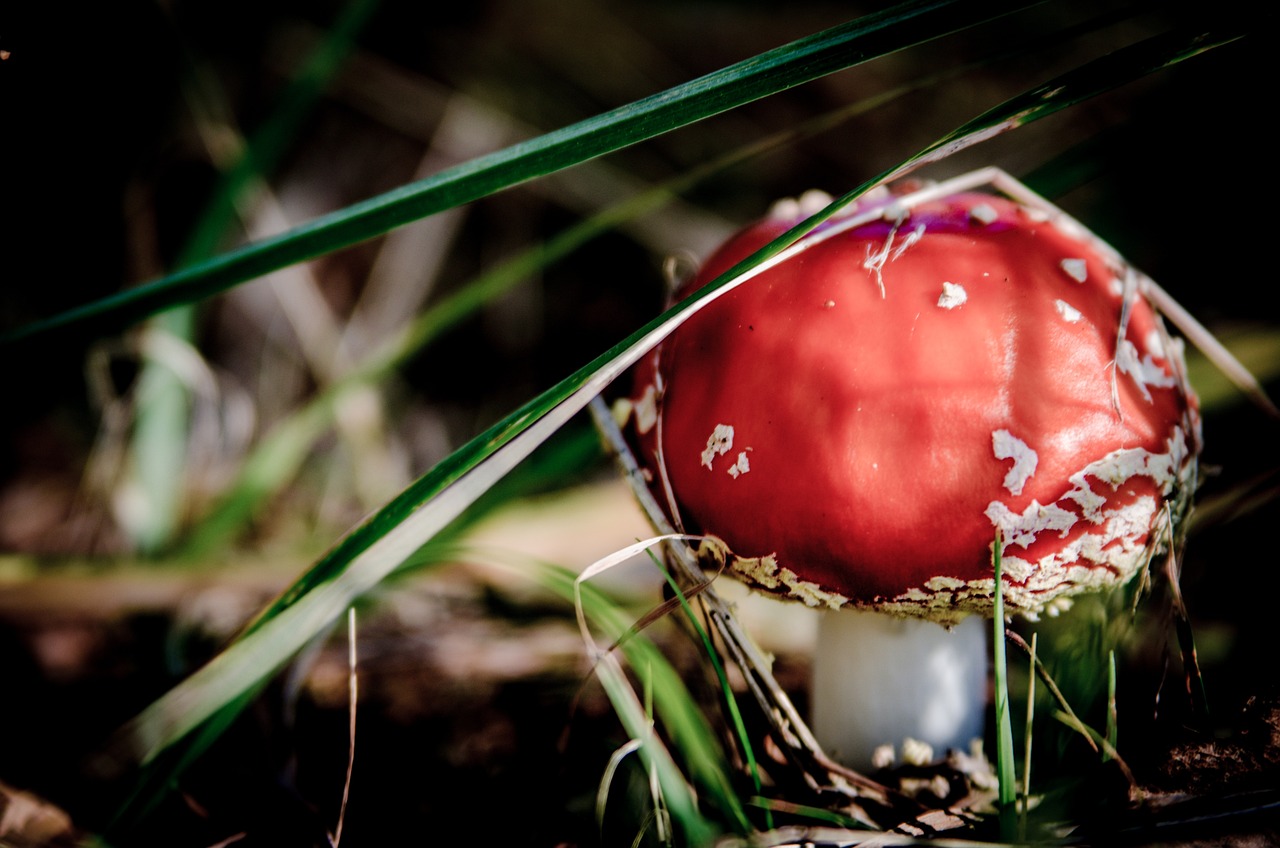
Collective Consciousness
Collective consciousness is a fascinating concept that refers to the shared beliefs, ideas, and moral attitudes that operate as a unifying force within a society. It's like the invisible thread that weaves individuals into a cohesive social fabric, shaping not only how we perceive the world but also how we interact with one another. Imagine a vast ocean where each wave represents an individual thought or belief, yet together they form a powerful tide that influences the course of human behavior and societal norms.
This phenomenon plays a crucial role in the formation of culture and identity. Through collective consciousness, we inherit a set of values and beliefs from our ancestors, which guide our actions and decisions. For instance, think about how cultural narratives—those stories passed down through generations—inform our understanding of right and wrong. They create a shared moral compass that helps individuals navigate the complexities of life.
In today’s fast-paced world, the rise of technology and social media has dramatically altered the landscape of collective consciousness. Platforms like Facebook, Twitter, and Instagram have become modern-day agora, where ideas are exchanged at lightning speed. This can lead to rapid shifts in societal beliefs, sometimes creating echo chambers where only similar views are amplified, while dissenting opinions are drowned out. As a result, we see phenomena such as viral trends, movements, and even misinformation spreading like wildfire, reshaping our collective psyche.
Moreover, collective consciousness is not static; it evolves over time. Major events—be they political, social, or environmental—can serve as catalysts for change, prompting a reevaluation of shared beliefs. For example, global movements advocating for climate change awareness have sparked a shift in public consciousness, encouraging individuals and communities to adopt more sustainable practices. This illustrates how collective consciousness can mobilize societies towards a common goal, highlighting the power of unity in addressing pressing issues.
To better understand this concept, we can look at the following table that illustrates key elements of collective consciousness:
| Element | Description |
|---|---|
| Shared Beliefs | Common ideas that bind individuals together, forming a foundation for social cohesion. |
| Cultural Norms | Unwritten rules that dictate acceptable behavior within a society. |
| Social Identity | The way individuals identify themselves within the larger context of their community. |
| Influence of Media | The role of traditional and social media in shaping and reflecting collective beliefs. |
In conclusion, collective consciousness is a dynamic and powerful force that shapes our identities and influences societal behavior. Understanding this concept is essential for grasping the complexities of human interaction in a rapidly changing world. As we navigate our individual paths, we must remain aware of the collective currents that guide us, ensuring that we contribute positively to the shared consciousness of our society.
- What is collective consciousness? Collective consciousness refers to the set of shared beliefs and values that are common within a group or society.
- How does social media affect collective consciousness? Social media amplifies certain beliefs and trends, often creating echo chambers that can influence societal norms and individual behaviors.
- Can collective consciousness change over time? Yes, collective consciousness is not static; it evolves in response to cultural shifts, major events, and social movements.
- What role does culture play in collective consciousness? Culture provides the framework of shared beliefs and values that shape collective consciousness and influence individual identity.
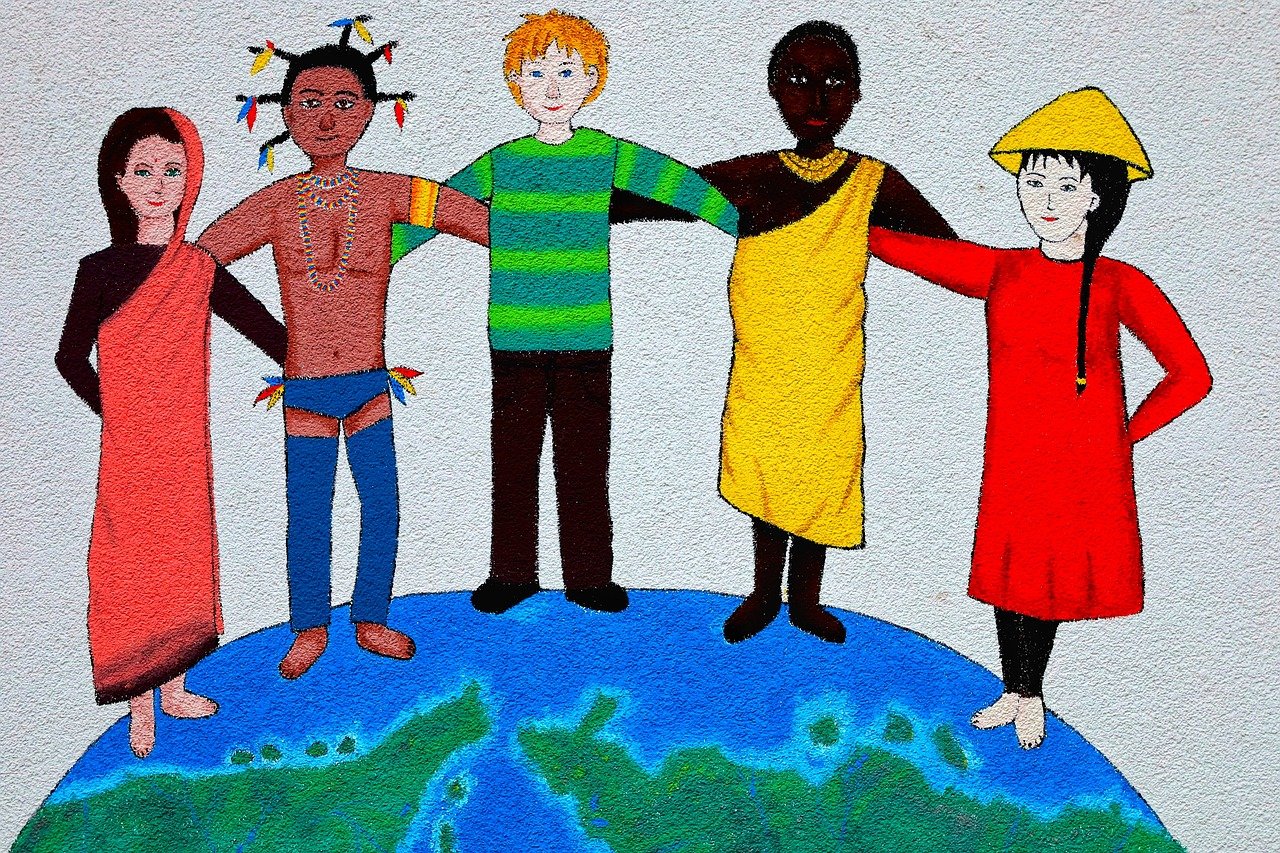
Cultural Influences
Culture is the invisible thread that weaves through the fabric of our lives, shaping not only our thoughts and behaviors but also our very perception of reality. It's fascinating to consider how cultural influences mold our beliefs, values, and even our emotional responses. From the moment we are born, we are immersed in a cultural environment that dictates what is deemed acceptable, desirable, or even taboo. This cultural backdrop becomes the lens through which we view the world, influencing everything from our personal identities to our collective consciousness.
One of the most profound aspects of cultural influence is how it shapes our understanding of concepts such as success, happiness, and love. For instance, in some cultures, success is measured by individual achievements and wealth, while in others, it is defined by community and familial bonds. This variance can lead to different life choices and aspirations, creating a rich tapestry of human experience. Consider how a person raised in a collectivist society may prioritize family obligations over personal ambitions, while someone from an individualistic culture might pursue their dreams with fervor, often at the expense of family ties.
Moreover, cultural narratives play a crucial role in shaping our identities. These narratives, which are often passed down through generations, provide a sense of belonging and continuity. They help us understand who we are in relation to others and the world at large. For example, myths and legends can instill values and morals that guide behavior, while religious beliefs can offer frameworks for understanding existence and morality. As we navigate our lives, we often draw upon these cultural narratives to make sense of our experiences and choices.
In today's globalized world, cultural influences are more interconnected than ever. The rise of digital media and the internet has facilitated the exchange of ideas across borders, allowing individuals to engage with diverse cultural perspectives. However, this blending of cultures can lead to both enrichment and conflict. On one hand, exposure to different ways of thinking can broaden our horizons and foster empathy. On the other hand, it can also challenge deeply held beliefs, leading to cultural appropriation or identity crises.
To illustrate the impact of cultural influences, consider the following table that outlines various cultural dimensions and their effects on individual behavior:
| Cultural Dimension | Description | Impact on Behavior |
|---|---|---|
| Individualism vs. Collectivism | Focus on individual rights vs. group harmony | Decision-making based on personal vs. group interests |
| Power Distance | Acceptance of unequal power distribution | Deference to authority vs. egalitarianism |
| Uncertainty Avoidance | Tolerance for ambiguity and uncertainty | Risk-taking vs. caution in decision-making |
In conclusion, cultural influences are a powerful force in shaping our consciousness and identity. They guide our perceptions, dictate our social interactions, and ultimately influence how we navigate the complexities of life. By understanding and appreciating these influences, we can foster a greater sense of empathy and connection with others, recognizing that while our experiences may differ, we are all part of the same human tapestry.
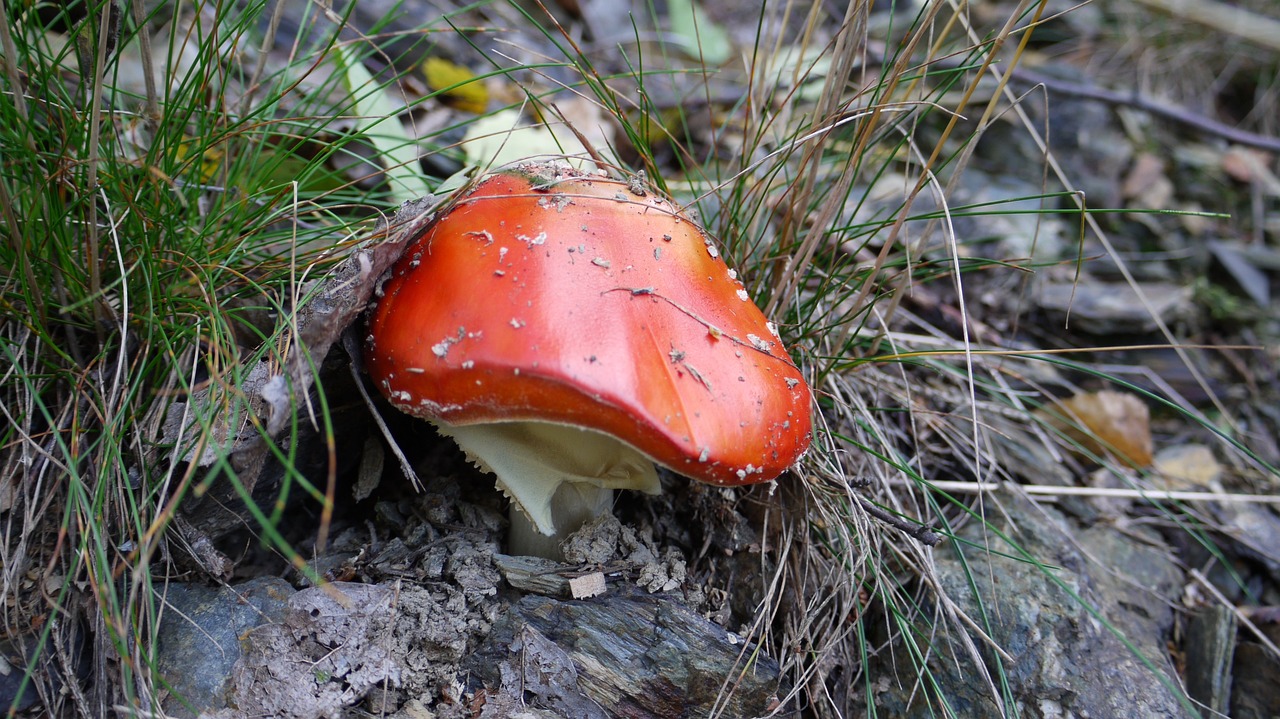
Social Media and Consciousness
In today's hyper-connected world, social media has become a powerful force in shaping our collective consciousness. It acts like a digital mirror, reflecting not only our individual thoughts and feelings but also the broader societal narratives that influence our perceptions. Have you ever wondered how a single tweet or viral post can sway public opinion or ignite a movement? This phenomenon illustrates the profound impact social media has on our consciousness, serving as a platform where ideas can spread like wildfire.
Social media platforms like Facebook, Twitter, Instagram, and TikTok have transformed the way we communicate, interact, and share information. They have created an environment where information is not only abundant but also instantaneous. This immediacy can be both a blessing and a curse. On one hand, it allows us to stay informed and connected; on the other hand, it can lead to information overload and the spread of misinformation. The question arises: are we truly in control of our consciousness, or are we being shaped by the algorithms that dictate what we see?
The algorithms behind social media platforms curate our feeds based on our interests, interactions, and behaviors. This personalization can create echo chambers, where users are exposed predominantly to views that align with their own. As a result, our understanding of the world can become skewed, reinforcing existing beliefs and biases. This phenomenon highlights the importance of being aware of how our online interactions influence our consciousness. Are we passively consuming content, or are we actively engaging with diverse perspectives?
Moreover, social media has redefined the concept of identity. Users often curate their online personas, presenting idealized versions of themselves to the world. This can lead to a disconnect between our online identities and our real-life selves. The pressure to maintain a certain image can create anxiety and impact mental health. It's essential to recognize that while social media can foster connection, it can also contribute to feelings of isolation and inadequacy. How do we balance our online presence with our authentic selves?
As we navigate this digital landscape, it’s crucial to reflect on the implications of social media on our consciousness. Here are some key points to consider:
- Information Consumption: Are we critically evaluating the information we consume, or are we accepting it at face value?
- Identity Formation: How does our online persona reflect our true selves, and what impact does this have on our self-esteem?
- Social Interactions: Are our online interactions enriching our lives, or are they leading to superficial connections?
- Cultural Narratives: How do the stories and images we share shape our collective understanding of societal issues?
In summary, social media plays a pivotal role in shaping our consciousness and collective identity. It’s a double-edged sword that offers both opportunities for connection and challenges to our mental well-being. As we continue to engage with these platforms, let’s strive to be mindful of their influence on our thoughts and beliefs. By fostering a critical approach to our online interactions, we can cultivate a healthier consciousness that embraces diversity and promotes understanding.
- How does social media affect mental health? Social media can lead to anxiety and depression due to comparison, cyberbullying, and the pressure to maintain an idealized online persona.
- Can social media create echo chambers? Yes, algorithms often promote content that aligns with users' existing beliefs, which can lead to a lack of exposure to diverse perspectives.
- How can I use social media mindfully? Engage with a variety of content, follow diverse accounts, and take breaks from social media to reflect on your online interactions.
- What role does social media play in activism? Social media can amplify voices, mobilize movements, and raise awareness about social issues, making it a powerful tool for activism.
Frequently Asked Questions
- What is consciousness?
Consciousness is the state of being aware of and able to think about one's own existence, thoughts, and surroundings. It's like the spotlight in a dark room that illuminates certain objects while leaving others in the shadows. Various theories attempt to define it, ranging from neurological perspectives to philosophical interpretations.
- Are there different levels of consciousness?
Absolutely! Consciousness exists on a spectrum. From waking consciousness, where we are fully aware and engaged, to altered states like dreaming or deep meditation, each level offers unique insights into our mental processes. Think of it as different layers of an onion, each revealing more about our mind and experiences.
- What is waking consciousness?
Waking consciousness is our everyday awareness. It shapes how we perceive the world and make decisions. It's the mental state where we interact with our environment, process information, and engage in activities. Imagine it as the main stage where the play of life unfolds.
- How does attention affect our consciousness?
Attention is crucial! It acts like a filter, determining what we focus on in our waking state. By selectively attending to certain stimuli, we can enhance our experiences and understanding of the world. It's similar to tuning a radio to catch your favorite station amidst all the static.
- What are altered states of consciousness?
Altered states of consciousness occur when our normal waking state changes, often induced by meditation, sleep, or substances. These states can provide profound insights or experiences that differ significantly from our everyday awareness, much like stepping into a different dimension of reality.
- What role does the subconscious mind play?
The subconscious mind is a powerful force that influences our thoughts, feelings, and behaviors without our conscious awareness. It’s like an iceberg—most of it lies beneath the surface, shaping our actions and reactions in ways we might not fully understand.
- How do dreams relate to the subconscious?
Dreams are a fascinating window into our subconscious. They often reflect our emotions, unresolved issues, and daily experiences, helping us process and make sense of our lives. Think of dreams as the mind's nightly movie, showcasing stories that reveal our inner thoughts.
- What are repressed memories?
Repressed memories are those painful or traumatic experiences that our subconscious mind hides away to protect us from emotional distress. However, they can still affect our behavior and mental health, often surfacing unexpectedly, much like a forgotten song that suddenly plays in your head.
- What is collective consciousness?
Collective consciousness refers to the shared beliefs, ideas, and moral attitudes that shape a society. It’s like a cultural web that connects individuals, influencing how we think and act within our communities. This shared awareness helps create a sense of belonging and identity.
- How does culture influence consciousness?
Culture plays a significant role in shaping our collective consciousness. It provides the narratives and symbols that guide our understanding of reality. Just as a painter uses colors to create a masterpiece, culture colors our perceptions and interactions with the world.
- What impact does social media have on consciousness?
In today’s digital age, social media has a profound impact on collective consciousness. It influences societal beliefs, identity formation, and even how we perceive ourselves. Think of social media as a giant mirror reflecting the thoughts and trends of our time, shaping our collective identity.


